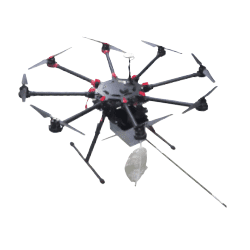Search WikiOdour by Keyword
Electronic Nose (e-nose)
Overview
An electronic nose (e-nose) uses a sensor array that reacts to air pollutants by leaving behind a ‘fingerprint’ that can be attributed to an odour. It is essentially composed of a sample delivery system, detection system and computing system. Common sensors include metal oxide semiconductor, conducting polymer sensors, acoustic wave sensors, field-effect gas sensors, pellistors, and fibre-optic sensors. The most commonly used sensors are conducting polymers, bulk acoustic devices and metal oxide semiconductors.
An electronic nose (e-nose) aims to provide odour concentration similar to that which is measured through olfactometry. It does this through an analytical study of the chemical composition of a sample. However, it has been proven that the correlation between analytical results and actual odour perception is not direct. This is due to potential interactions between several odorous components.
E-Nose Objective
The objective and main sought after benefit of e-noses is continuous feedback of “odour levels”. The main drawback of e-noses is the calibration phase. The non-linear synergy between different chemicals and the continuous sensor drift (loss of sensitivity due to age, temperature, humidity, etc.) requires a more advanced calibration method than what has been historically implemented in electronic noses. Other technical issues including mould and contamination of the sample lines have been widely reported for most electronic noses available on the market.
Development Challenges
In conclusion, the majority of development in electronic noses technology has been focused on the development of sensitive sensors. This approach ignores the fundamental challenge with machine olfaction which is the simulation of odour perception, not detection. Human odour perception is the interpretation of the signals which are received from the olfactory bulbs. Therefore, they rely heavily on the human brain. Any electronic nose that would mimic the human olfaction must also simulate the perception of the odour which would require simulation of the entire human olfactory system.


